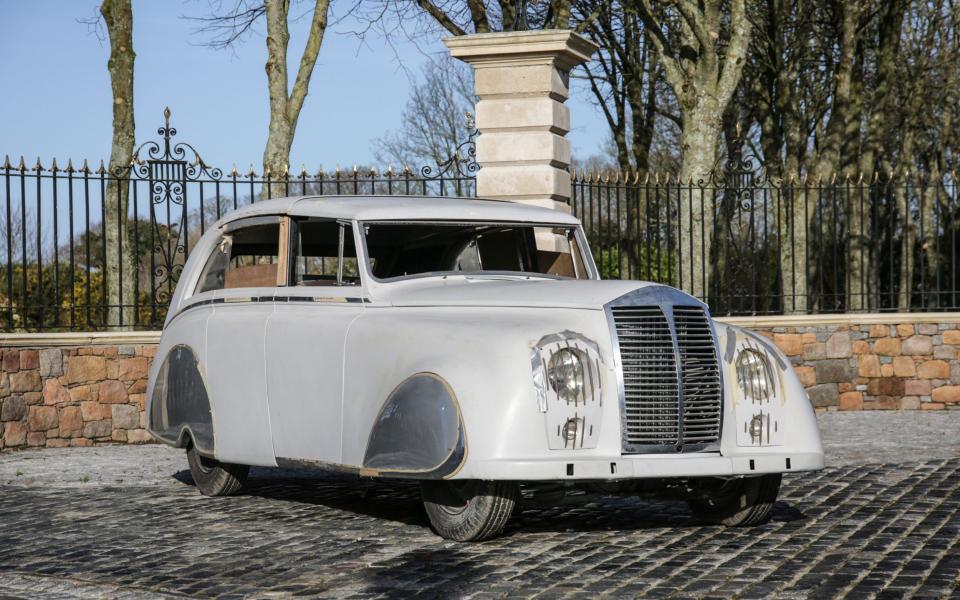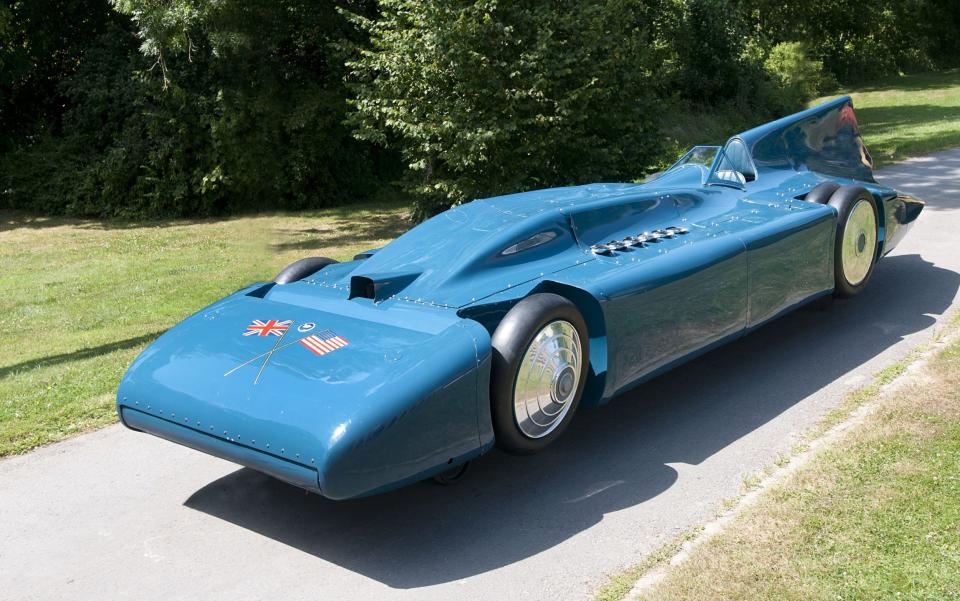How the billionaire class is driving the resurgence of bespoke cars

Buying a car was once a made-to-measure process akin to ordering a bespoke suit. A wealthy driver would select a carmaker for the chassis, engine and moving parts of the vehicle, and a separate coachbuilder for the body.
Now a surge of spending from the ultra wealthy has brought back a custom car industry that collapsed after the Second World War.
Rolls-Royce and Bentley have both enjoyed a wave of record sales based on rich clients demanding add-ons and oddities – from trims made of 5,000-year-old wood salvaged from East Anglian bogs to hand-stitched seats and canary yellow interiors.
Paul Abercrombie, an entrepreneur based near the motoring heartlands of Coventry, believes the trend of custom motors is back.
He has set up Allesley, an auto company aiming to revive the lost art of the coachbuilder.
Abercrombie, whose career began in luxury property, is tight lipped on who his clients are but they will be very, very rich.
Customers must buy a car from a top limousine or sport car maker for his company to customise. Allesley then strips back and redesigns them. Price will depend on the design and workload, but seven-figure sums are likely to be the norm – on top of the cost of the initial car.
Coachbuilding, as the name suggests, has its origin in the manufacture of horse-drawn vehicles. The companies that made bodies for the likes of Rolls-Royce, Daimler and other high-end car makers often started out making carriages.
Often custom bodies still conformed to a set, recognisable pattern, for example looking near-identical to official Rolls-Royces, Bentleys or Daimlers. But sometimes, buyers would demand a one-off from a top coachbuilder, with a unique shape and luxurious interior.
The practice was killed off by a number of factors, including a more austere post-war economy and the companies themselves moving on to other endeavours after they were compelled to make military hardware during the Second World War.
But the biggest factor was a change in the way cars were designed. Pre-war cars started with a chassis that housed an engine, drivetrain and wheels, onto which a body could be bolted. Then came the advent of the unibody design, where the chassis and the rest of its frame are one item.
The unibody, or monocoque, approach was cheaper and lighter when combined with mass production. But it was a headache for coachbuilders that would either need a separate run of chassis-only cars to adapt, or to cut off the existing body of a vehicle.

Still, the practice never fully died out. Italian coachbuilder and frequent Ferrari collaborator Pininfarina remains as an obvious example. But in the UK, many big names were bought up or closed down.
In the case of the Swallow Sidecar and Coachbuilding Company, it ultimately became Jaguar Cars Limited.
However, Abercrombie believes the business model is ripe for a comeback. Crucially, he believes the shift to electric cars now provides an opportunity since they can be closer to a chassis design.
While leather seats and colour choices can be offered by a regular car maker, his business goes much further. It can remould the car and redesign the interior from scratch.
“It’s not very easy but it’s an easier process [with electric cars],” he says. “We’re finding clients who want to create completely unique vehicles, some of our clients have owned many supercars so the next obvious step is to create a one-off bespoke vehicle that is unique to you.
“That could be changes to the body, bespoke interiors, more interior space, entertainment systems specific to them, something beyond the usual.”
Peter Moss, a motoring historian and a board member of the Society of Automotive Historians in Britain, says the heyday of coachbuilders was the roaring 1920s.
“Nobility and gentry were the only people who could afford motorcars in the early days; they were almost toys, play things for the rich and famous.
“They were used to bespoke tailoring from Savile Row, they wanted a bespoke coachbuilder – rich people are always looking for bespoke stuff.”
Moss says the best of what could be achieved can be seen in the work of J Gurney Nutting & Co., which built bodies for clients as diverse as the Duke of Windsor and motor racer Sir Malcolm Campbell.
It was for Sir Malcolm that J Gurney Nutting helped make the Blue Bird, a car that used a mighty V12 seaplane engine to reach more than 300 miles per hour and claim the 1933 world land speed record.

Not all custom cars were masterpieces, however. Rich buyers unused to being told “no” could run riot and create a monster.
Moss gives the example of flamboyant Armenian oil heir Nubar Gulbenkian’s Rolls-Royce, a “hideous” variation on the classic Rolls shape with a horizontal grille, shrouded front and covered rear wheels.
It was coachbuilt by Hooper & Co, which made beautiful carriages for King William IV, Queen Victoria and King Edward VII.
“It’s a great surprise that anybody allowed it to happen,” Moss says.
Abercrombie, the boss of newcomer Allesley, says his company won’t take one car and make it look like another, ripping off an existing design. It would also hesitate in doing something drastic to a design classic.
As can be imagined, mega-rich clients who are parting with hundreds of thousands of pounds can demand plenty of attention, although that’s part of the fun.
“We have a client who is very active, who phones me every morning at 8am for an update on the project and to give some ideas,” Abercrombie says. But others, busy managing billion-pound empires, require more chasing.
Often the customer will have been thinking about their dream car for years and will hand over a trove of design ideas and pictures.
Is there a theme that unified his customers’ demands? If there is, it’s “road presence,” he says. Cars with tall bonnets driven by a chauffeur.
They want “the ultimate red carpet car” to be seen in “a private family’s version of a state limousine”.
There are broader lessons to be drawn from the era of coachbuilding, says Andrew Graves, a car industry veteran and professor at the University of Bath.
“What’s quite interesting is the customer is very close to the product in coachbuilding, which we got away from for a long time.”
Modern production methods can allow for far more personalisation on even a cheap family car, he suggests, although the mass-production industry is yet to seize upon this opportunity.
Until that happens, walnut drinks cabinets and legroom made to measure will be for the billionaire classes only.
